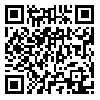Volume 11, Issue 1 (2007)
MJSP 2007, 11(1): 207-228 |
Back to browse issues page
Download citation:
BibTeX | RIS | EndNote | Medlars | ProCite | Reference Manager | RefWorks
Send citation to:



BibTeX | RIS | EndNote | Medlars | ProCite | Reference Manager | RefWorks
Send citation to:
Yamani M, Jedari Eyvazi J, Gorabi A. The Geomorphological Traces of Glaciers Boundaries in Karkas Mountains. MJSP 2007; 11 (1) :207-228
URL: http://hsmsp.modares.ac.ir/article-21-7262-en.html
URL: http://hsmsp.modares.ac.ir/article-21-7262-en.html
1- University of Tehran, tehran, iRAN
2- (Associated Professor, University of Tehran)
3- ( Ph.D Student, University of Tehran
2- (Associated Professor, University of Tehran)
3- ( Ph.D Student, University of Tehran
Abstract: (7491 Views)
All studies worked of Iran climatic changes are related to this recent century. These works mainly have done by foreign researcher but there are deferent views of the reached results. Hans Bobek stated the best views on this way. Regarding to Iran elevation aspects he divided five morphoclimatic - morphodynamic regions. The studied area is located on the karkas northern slopes by border of Band-e-Rig in the east of Kashan. This region was influenced mainly on the rainy condition in quaternary cool era. The important point is the morphological features situated in the area of interest don’t correlate with the proposed temperature which was 4° to 6° C for that time. Therefore, we used daily temperature mean for analyzing and retrieving the last temperature conditions of local meteorology stations. For this reason the temperature in the glacier era is considered at the rate of 0° for present cirque (3000 meter H). The methodology for this research is the comparing of that temperature (0°) with present time temperature. The results show the temperature at the last Glacier time for this area was about 12°-14 C ° cooler than the present time. The presence of moraines and glacial tongues to 2000 in elevation and other traces are the most important futures of that time.
Received: 2006/02/5 | Accepted: 2007/01/16 | Published: 2007/03/21
| Rights and permissions | |
 |
This work is licensed under a Creative Commons Attribution-NonCommercial 4.0 International License. |






